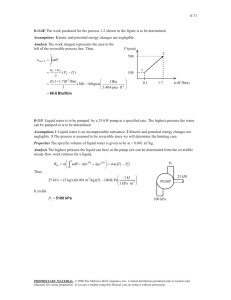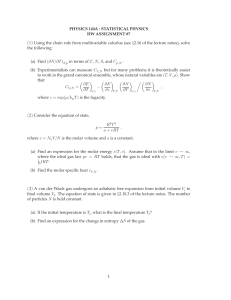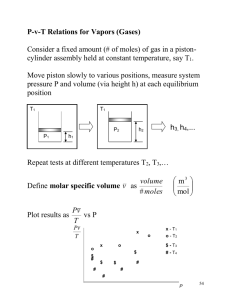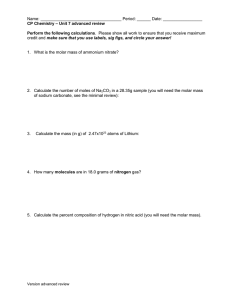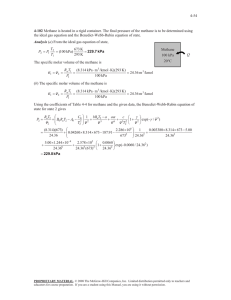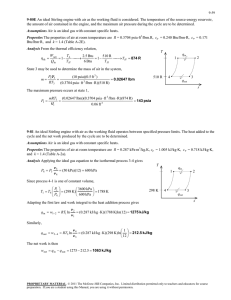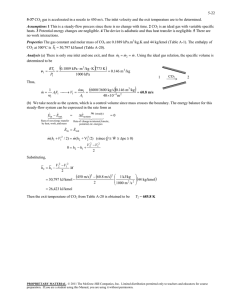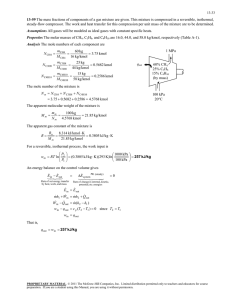4-36 kg/kmol) since propane is heavier than air (molar mass =... Ideal Gas
advertisement
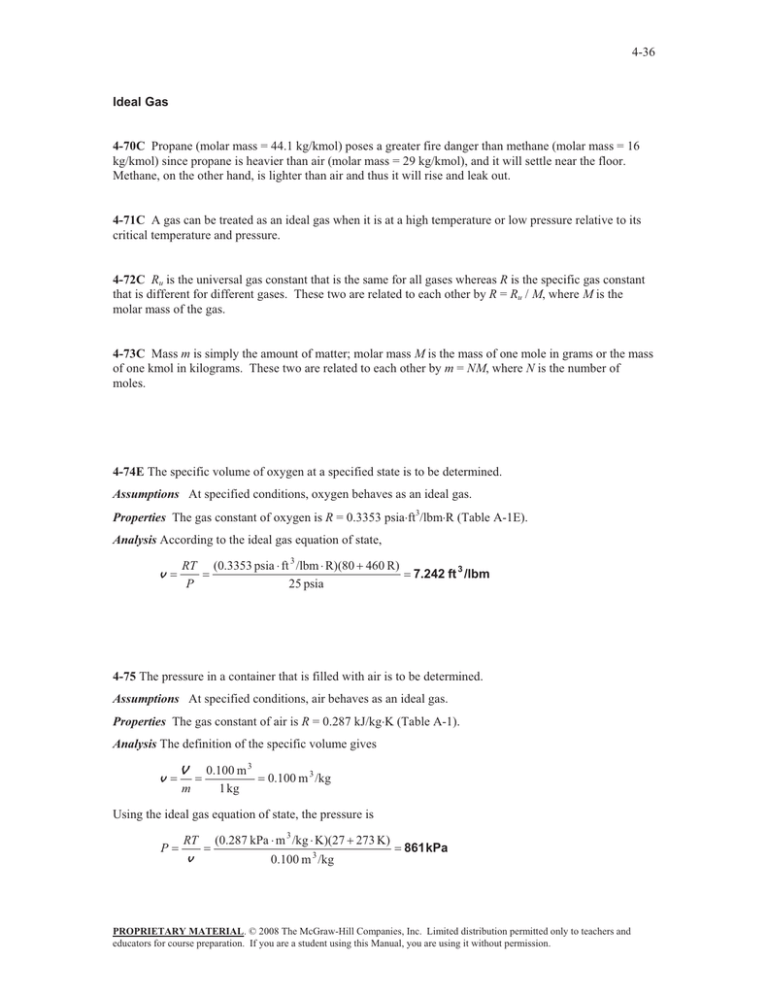
4-36 Ideal Gas 4-70C Propane (molar mass = 44.1 kg/kmol) poses a greater fire danger than methane (molar mass = 16 kg/kmol) since propane is heavier than air (molar mass = 29 kg/kmol), and it will settle near the floor. Methane, on the other hand, is lighter than air and thus it will rise and leak out. 4-71C A gas can be treated as an ideal gas when it is at a high temperature or low pressure relative to its critical temperature and pressure. 4-72C Ru is the universal gas constant that is the same for all gases whereas R is the specific gas constant that is different for different gases. These two are related to each other by R = Ru / M, where M is the molar mass of the gas. 4-73C Mass m is simply the amount of matter; molar mass M is the mass of one mole in grams or the mass of one kmol in kilograms. These two are related to each other by m = NM, where N is the number of moles. 4-74E The specific volume of oxygen at a specified state is to be determined. Assumptions At specified conditions, oxygen behaves as an ideal gas. Properties The gas constant of oxygen is R = 0.3353 psiaft3/lbmR (Table A-1E). Analysis According to the ideal gas equation of state, v RT P (0.3353 psia ft 3 /lbm R)(80 460 R) 25 psia 7.242 ft 3 /lbm 4-75 The pressure in a container that is filled with air is to be determined. Assumptions At specified conditions, air behaves as an ideal gas. Properties The gas constant of air is R = 0.287 kJ/kgK (Table A-1). Analysis The definition of the specific volume gives v V m 0.100 m 3 1 kg 0.100 m 3 /kg Using the ideal gas equation of state, the pressure is P RT (0.287 kPa m 3 /kg K)(27 273 K) v 0.100 m 3 /kg 861 kPa PROPRIETARY MATERIAL. © 2008 The McGraw-Hill Companies, Inc. Limited distribution permitted only to teachers and educators for course preparation. If you are a student using this Manual, you are using it without permission.


